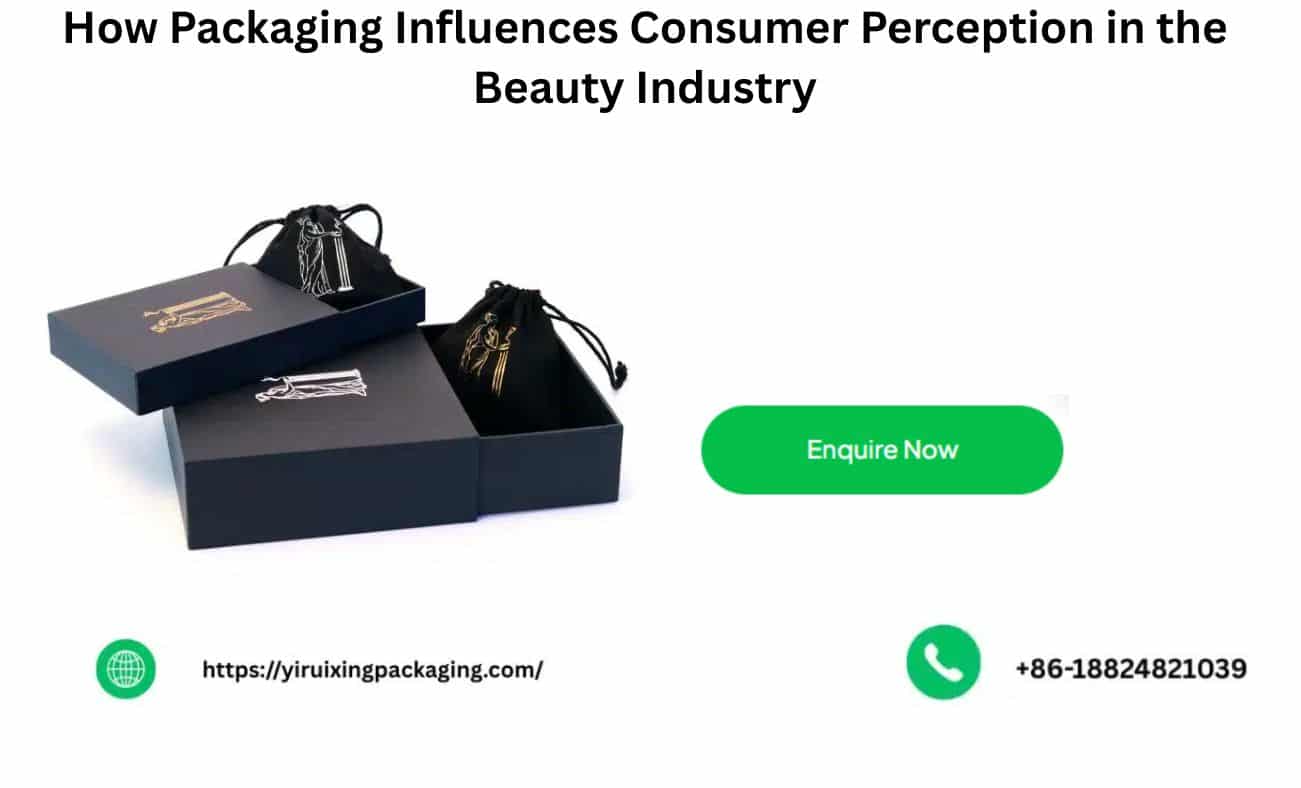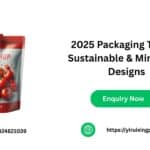Packaging has become a major factor in the interaction between consumers and brands, and thus, is not just a box in the highly competitive beauty industry. The way a package is designed, the materials used, and even the tactile experience it offers can, for example, in the case of a glossy serum in New York, or a lacquered compact in Tokyo, change the perception of luxury, quality, and trust by a huge margin. Seeing, touching, and unboxing are the main ways consumers ascertain the quality, and very often, over 72% of people admit that packaging design is a deciding factor for them to buy personal care products, according to research. In the USA, China, Germany, Japan, Australia, and Hong Kong, these markets are the same in terms of packaging — they signal the beauty of the product and, at the same time, they also convey brand values, sustainability commitments, and emotional experiences. Here in this blog, we discuss about how packaging influences consumer perception in the beauty industry.
Table of Contents
ToggleWhy Packaging Matters: Global Insights & Psychology
Visual appeal drives first impressions
Studies indicate that 64% of buyers opt for a new skincare product solely due to its packaging. An attractive design could be the deciding factor in a packed shelf — or even in a packed Instagram feed.
Material influences perceived value
The presentation of the product (i.e., glass or plastic, matte or glossy) gives off subconscious quality signals. Researchers have discovered that the attributes of material, shape, and color tone are the most important ones for Gen Z when selecting beauty items.
Texture and finish create an emotional connection
Tactile design is very strong: luxurious matte or embossed textures attract the attention of people who want to be seen as the users of products made with such materials, while metallic or glossy ones are considered to be of the upper class. The consumer experience of a product is not just that it feels nice; it is also through texture that brand perception is formed in the consumer’s mind.
Sustainability shapes modern expectations
In a lot of markets, especially the younger consumer segment, eco-friendly packaging is no longer an option; it is a must. A rising number of beauty labels, however, are already using recycled glass, post-consumer plastics, or even metals like aluminum as substitutes for the conventional packaging materials.
Practical design matters
Intelligent closures, refillable options, and see-through or portable packaging not only affect the initial purchase but also the repeated one. To tell the truth, convenience (user-friendly cap), security, and ergonomic feel are all factors that add to the positive experience.
Key Facts: Packaging & Consumer Perception
- The design of the packaging is reported by 72% of consumers as a major factor that determines their purchase decision.
- 67% are under the influence of the type of packaging materials.
- 61% would consider purchasing again the beauty products if the packaging feels luxurious.
- 46% of women in the U.S.A. who buy beauty products say packaging is “influential” or “very influential” in their buying decisions, and this percentage climbs to 50% for millennials and Gen Z. Global Cosmetic Industry
- Studies suggest that for Gen Z, material (glass vs plastic) is more significant than shape and color for their purchasing decisions.
- The global market for beauty & personal care packaging is expected to have a CAGR of 7.8% during the period of 2025-2035, with China ranking first at 10.5% and the USA second at 6.6%.
- In the case of cosmetic product packaging, China’s market is expected to expand at a rate of 6.8% CAGR until 2035, Germany at 5.8%, the USA at 4.8%, and Japan at 3.8%.
Packaging Preferences: A Comparative View by Region
| Region/ Country | Packaging Trends in the Beauty Industry | What Consumers Value |
| USA & Australia | High demand for premium aesthetics, refillable formats, smart packaging | Design that looks Instagrammable, sustainable materials, and convenience |
| China & Hong Kong | Fast-moving beauty, luxury limited editions, holographic finishes | Exclusivity, collectability, technology-infused designs |
| Germany & Europe | High innovation in packaging tech, precision molding, and recyclable materials | Quality manufacturing, durability, and eco-conscious packaging |
Why Packaging Impacts Loyalty & Purchase Intent
Brand Trust and Transparency
Packing that is transparent or “lab-style” gives the consumers an idea of the product’s high effectiveness.
Unboxing as an Experience
Consumers in the US and Hong Kong markets are the ones who share unboxing videos on social media. This not only creates a brand impression but also makes it stronger and more attractive.
Repurchase and Premium Feel
High-quality packaging gives the feeling of heavy glass, textured plastic, or fashionable closures, and consequently, customers can be greater inclined to shop for the product again.
Sustainability Aligns with Values
Australia, China, and Germany are a number of the markets wherein sustainability is the principal element driving innovation. Brands that use recycled materials or are refillable aren’t just visible at the top; however also get extra customer support.
Packaging Innovation & the Rise of “Jewelry Packaging”
Beauty packaging has come to a point where it—increasingly—not only acts as a protector but also as a piece of jewelry that adorns. Imagine this scenario: a limited-edition compact that is as beautiful as a jewel box, a magnetic closure that is so neat one can hardly notice it, or an outer skin that is so gorgeous it can even pass as jewelry packaging rather than a cosmetic container. This mixture of upholding functionality and luxury excites consumers more than before and gives them the impression that they are in for a very exclusive and valuable item.
Brands that take advantage of this trendy “jewelry packaging” not only win customers over in terms of looks but also nurture the emotional bond and the perceived value of the product. The extravagant, collectible-style layout in markets like China, Hong Kong, and the U.S. is the primary driver for social sharing and logo loyalty. The packaging will become an accessory itself, once in a while, even getting more attention than the product internal.
Challenges & Risks
Even though there are many advantages, there are also some challenges:
- Cost vs sustainability: The use of green materials or fill-up systems typically ends in a higher fee, and a few purchasers are involved approximately the hygiene or the benefit.
- Recycling obstacles: The aluminum packaging is even greater luxurious than the regular one due to the fact that it is endlessly recyclable; however, the environmental cost is still high at some stage in its production, and the present-day recycling prices (like ~35% for aluminum inside the U.S.) may be very low.
- Balancing act: There is a steady battle for manufacturers between the aesthetics (top class or ornamental) and the realistic facet (sturdiness, consumer-friendliness). While packing, uselessly designed useful products can irritate the users.
- Cultural misstep: What is appealing in Germany (precision, minimalism) is probably an entire failure in China (flash, restrained versions), so international splendor companies ought to be very careful with their packaging strategies and take the tradition into consideration.
Conclusion
The beauty industry has always regarded packaging as a form of communication, albeit an indirect one. The elimination of any implicit aspect in the right design, material, and structure can result in the provoking of particular feelings, quality being implied, and loyalty being formed. The brands have to find the right point between the beautiful, the environmentally friendly, and the practical design that will make them resonate with the new type of consumers.
In this matter, a professional service like Yiruixing Packaging is of great help. The combination of design knowledge with environmentally friendly materials and smart solutions makes Yiruixing Packaging a strong ally for the beauty brands to enhance their consumers’ perceptions and, at the same time, attain the sustainability targets. The right packaging partner can embody your brand narrative as a visual and tactile experience that consumers will trust and love, no matter if you’re crafting elegant glass bottles for luxury cream, stocks for skincare, or even packaging for beauty-associated products like jewelry.
FAQs
Does “jewelry packaging” actually help beauty brands?
Yes! This fashion — where cosmetic packaging containers appear to be stylish rings packaging — creates an experience of exclusivity and emotional cost. Consumers love products that look stunning on show, and they frequently percentage them on social media. It’s a tested way to boost logo perception and desirability.
How does bad packaging affect my view of a product?
If a cap breaks, leaks, or feels reasonably priced, it instantly reduces belief. Even if the product inside is great, bad packaging makes you feel the logo didn’t put sufficient effort into pleasant. In some cases, users won’t repurchase basically because of a bad packaging experience.
Does packaging influence how expensive a product feels?
Definitely. A $15 product in a heavy glass bottle can feel like a $40 luxurious item. Color schemes, embossing, metallic accents, and box thickness all play a role. Consumers frequently associate weight and element with better cost.
How important is unboxing in the beauty industry?
Very vital — particularly on social media. From YouTube to TikTok, unboxing films have an effect on perception. If the packaging looks aesthetic, specific, or top-class, it increases shareability and boosts the emblem’s overall impact.





